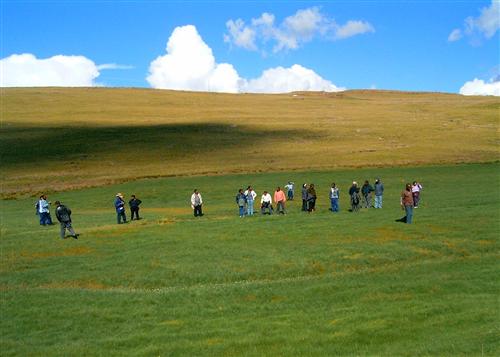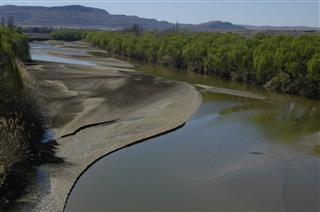Most experts agree that overall the supply of drinking water has improved over the past 20 years in the countries bordering the Orange River. Governments are seeking to supply even remote communities in the desert with water and most informal settlements today at least have a communal water supply or access to potable groundwater.
Higher consumption leads to lower quality of water
With an availability of less than 1 000 cubic metres of water per person per year, all countries of the basin (except Lesotho) are water-scarce countries according to UN standards. As the population and economy (mining and industry around Johannesburg, commercial agriculture along the Caledon, Vaal, middle and lower Orange) grow, water is reused more often; and pollution can less and less be alleviated by dilution. This challenge, which mainly affects South Africa, grows more acute by the day.
For a long time society in southern Africa has focussed on water quality – building and improving infrastructure like dams etc.. The issue of water quality has been largely ignored; relevant legislation (in South Africa starting in the early 1960s) has not been sufficiently enforced.
In the late 1990s, however, experts from the National Committee on Climate Change and elsewhere started to warn that the situation could not continue. Population growth and current trends of socio-economic development would make it impossible for South Africa to sustain its traditional pattern of water consumption. Indeed, the experts cautioned that by 2030 South Africa’s fresh water supply would no longer meet the growing needs of population and industry.
Despite this warning, consumption by agriculture, industry, mining and households keeps on growing. The supply is further strained by increasing levels of pollution, in some cases with highly toxic substances – especially in the densely populated region of Johannesburg, Pretoria and the Vaal Triangle.
Moreover, there are situations where problem substances found in water bodies are becoming more concentrated – for several reasons:
-
Since the large cities of the Orange River basin are situated at higher altitude than surrounding water storage dams, some of the wastewater inevitably finds its way into these dams.
-
The fact that the waters of these dams are more or less static, results in higher water temperatures, which speed up undesirable chemical processes and promote the growth of algae and bacteria
-
Due to the intensive water usage in the Vaal catchment, not enough clean water remains to dilute the toxins to safe levels
-
South Africa’s ageing treatment plants are not able to remove all toxins, and some of these end up in drinking water.
Main Impacts
The main man-made sources of water pollution in the Orange-Senqu River basin can be listed as follows:
-
Erosion in the upper reaches of the rivers, mainly in Lesotho
-
Mining and minerals processing.
-
Not sufficiently treated industrial effluent.
-
Inappropriate disposal of waste and other pollutants (unprotected landfills, illegal disposal, loss of fuel etc.).
-
Domestic effluent (broken pipes and insufficient treatment in (peri-urban, soak-aeays in rural areas).
-
Impact of agriculture (irrigation, redistribution of river waters, agricultural effluent).

Healthy wetland in the Lesotho Highlands.
Source:Lesotho Water Commission 2002
( click to enlarge )
Variable Water Quality in the basin
The water quality in the Orange-Senqu basin is highly variable due to a combination of natural and anthropogenic factors. The Senqu River system generally provides high quality water, thanks to a relatively undeveloped mountain catchment, and the natural filtering effects of the wetlands of the Lesotho highlands. However, water quality generally deteriorates as the river moves downstream, receiving a variety of inputs from agriculture, industry and urban/rural domestic sources, in addition to the discharge of sediments from erosion.
A summary of human influence along the Orange-Senqu River basin:
-
The Upper Orange-Senqu River region generally experiences minimal impacts from industry and mining activities, as there are very few facilities in this region which is dominated by rural communities rather than urban centres.
-
The Vaal River is impacted by the legacy of gold mining, by coal mining, Africa’s largest industrial area, significant dryland and irrigation agriculture and large (partly informal) settlements. The Vaal River is considered strongly polluted by many different pollutants.
-
As the waters of the Vaal normally don’t reach the Orange, the water quality in the Lower Orange River is mainly impacted (eutrophication) by erosion in the upper reaches of the Caledon and Orange and by agriculture along the river. Salinity in the Lower Orange River is elevated additionally due to the transfer of water out of the basin, which reduces the dilution of saline irrigation return flow to the river.
 The Caledon River, Lesotho. Source:Vogel 2009 ( click to enlarge ) |
Main Impacts
Water quality in the Orange-Senqu River basin is affected mainly by these factors, which will be explained in the following pages:
